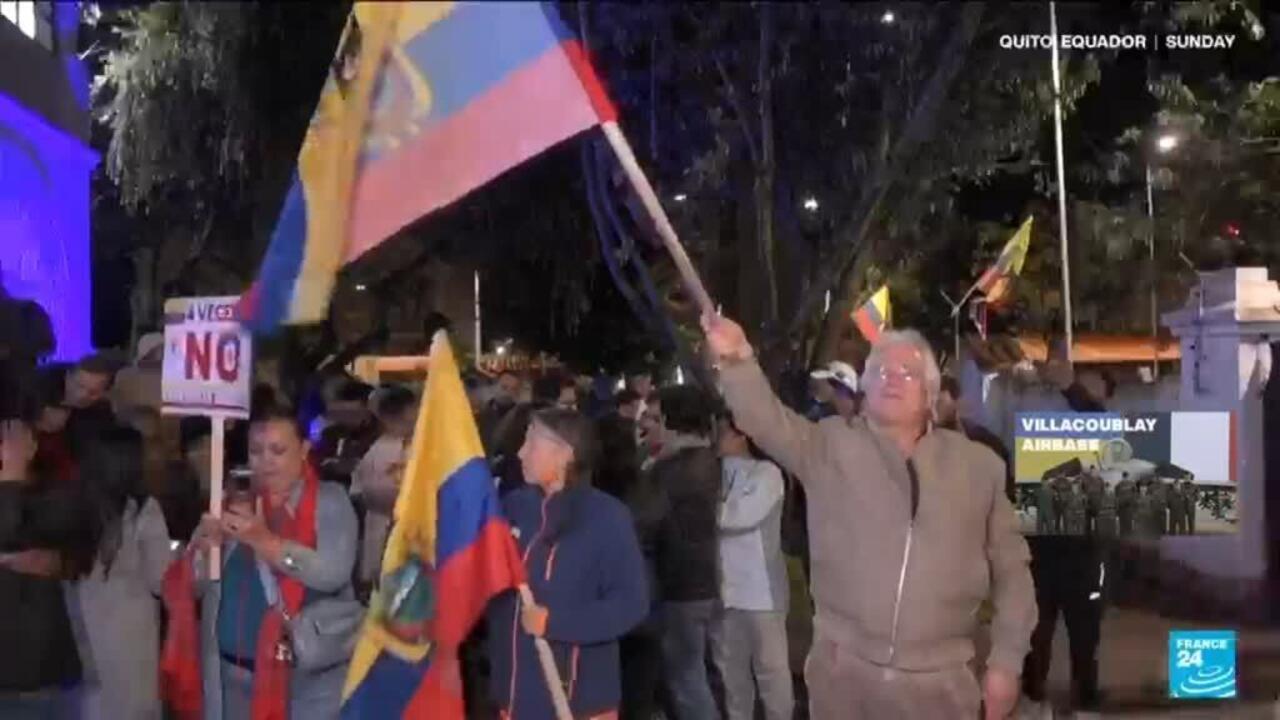Venezuela announced Tuesday that it was launching a massive military exercise across the country, reportedly involving some 200,000 forces, in response to the increasing presence of U.S. military assets in the region. The announcement by Venezuela's military came as the U.S. Department of Defense confirmed the nuclear-powered aircraft carrier USS Gerald Ford had entered the Southern Command's area of responsibility — which includes the Caribbean.
The Venezuelan Ministry of Defense said the exercise launched Tuesday involved the deployment of land, air and sea assets.
Defense Minister Vladimir Padrino said on Venezuelan state TV that 200,000 troops were involved in the exercise, according to the French news agency, AFP.
 Members of the Venezuelan Armed Forces participate in the "Plan Independencia 200" defense deployment ordered by Venezuela's President Nicolas Maduro, amid rising tensions with the United States, in Merida, Venezuela, in a handout picture made available on Nov. 11, 2025.
Merida Governorate/Handout/REUTERS
Members of the Venezuelan Armed Forces participate in the "Plan Independencia 200" defense deployment ordered by Venezuela's President Nicolas Maduro, amid rising tensions with the United States, in Merida, Venezuela, in a handout picture made available on Nov. 11, 2025.
Merida Governorate/Handout/REUTERS
"They are murdering defenseless people, whether or not they are drug traffickers, executing them without due process," Padrino was quoted as saying, referring to U.S. military strikes on alleged drug trafficking boats in the Caribbean and eastern Pacific that began in September.
Since then, U.S. forces have targeted around 20 vessels in international waters, killing at least 76 people. The Trump administration says the operations — the details of which remain murky — are part of an anti-drug offensive.
The USS Ford is the largest aircraft carrier in the world, and the U.S. Navy's most advanced. It left the U.S. military's Mediterranean Command region Tuesday and entered the Southern Command region, which includes the waters around Latin America.
 The USS Gerald R. Ford in Newport News, Virginia, on April 8, 2017.
Mass Communication Specialist 2nd Class Ridge Leoni/U.S. Navy/Getty
The USS Gerald R. Ford in Newport News, Virginia, on April 8, 2017.
Mass Communication Specialist 2nd Class Ridge Leoni/U.S. Navy/Getty
Aircraft on board the Ford include four squadrons of F/A-18 Super Hornets, an electronic F-18 variant squadron, Airborne Warning and Control Systems, two Helicopter Sea Combat Squadrons and a logistics support squadron.
The U.S. has also deployed F-35 stealth warplanes to Puerto Rico, as well as six other U.S. Navy ships in the Caribbean.
Many people both inside Venezuela and observers outside the country believe the increased U.S. military pressure on Caracas is aimed at forcing President Nicolas Maduro out of office, including Maduro himself.
President Trump has not stated that as his intention, though he's said he believes Maduro's days in office are numbered. Mr. Trump has repeatedly accused Maduro of being complicit with armed criminal gangs that smuggle drugs into the U.S. — accusations the Venezuelan leader has rejected.
A former top diplomat to Venezuela, Ambassador James Story, who served in President Trump's first term and under President Joe Biden, told 60 Minutes last month that the U.S. could oust Maduro by force.
If there is a U.S. military attack on Venezuela, Defense Minister Padrino said Tuesday in his televised remarks that foreign troops would find a "community united to defend this nation, to the death."
Some of Venezuela's neighbors have also raised serious concerns over the U.S. attacks on small boats.
Colombia's President Gustavo Petro on Tuesday ordered his country to stop sharing intelligence with the U.S. He said the directive would "remain in force as long as the missile attacks on boats in the Caribbean continue."
"The fight against drugs must be subordinated to the human rights of the Caribbean people," said Petro, who told CBS News in an exclusive interview in October that the strikes against boats were illegal and ineffective.
CBS News deputy foreign editor Jose Diaz Jr. contributed to this report.











 English (US) ·
English (US) ·